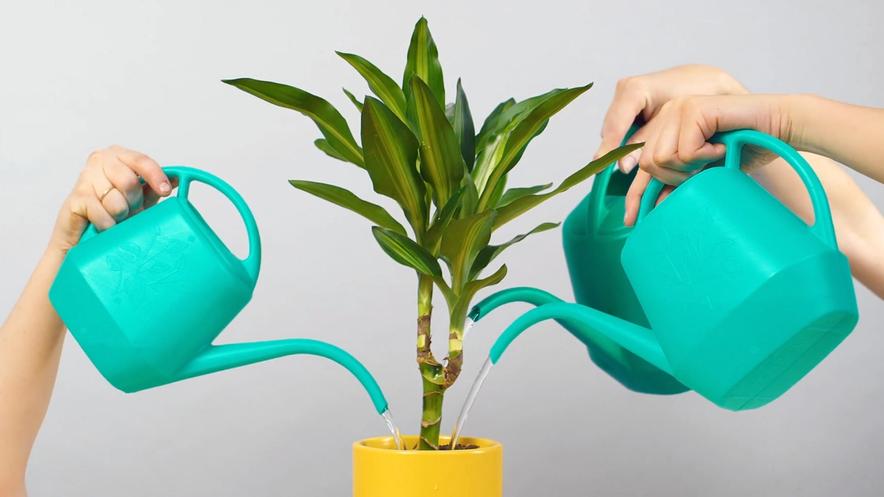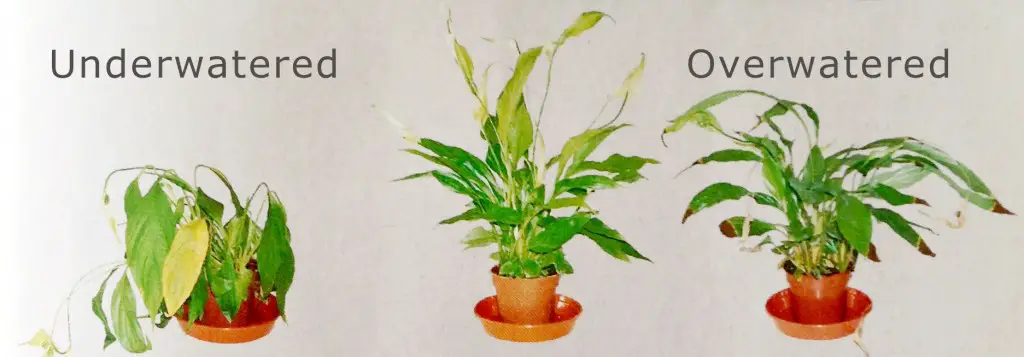Remove the plant from its pot and let the soil dry out. Trim any damaged roots and repot with fresh soil.
Overwatering is a common issue for house plant enthusiasts. Excess water can lead to root rot, which harms the plant. Symptoms include yellowing leaves, wilting, and a soggy soil surface. Properly addressing overwatering involves immediate action to prevent long-term damage.
Knowing how to rescue your plant is crucial. Removing the plant and allowing the soil to dry is the first step. Trimming damaged roots helps in recovery. Repotting with fresh, dry soil ensures the plant gets a healthy start. These steps can save your plant and help it thrive again. Proper watering techniques prevent future issues.

Credit: www.thesill.com
Signs Of Overwatering
Overwatering house plants can harm them. It’s important to know the signs. These signs will help you save your plant in time.
Wilting Leaves
Wilting leaves can be a sign of overwatering. The plant can’t breathe if roots are too wet. The leaves droop and look sad.
Yellowing Foliage
Yellowing foliage is another sign. Too much water drowns the roots. This makes leaves turn yellow.
Mushy Stems
Mushy stems are a serious sign. The stems feel soft and mushy. This means the plant is rotting.

Credit: www.reddit.com
Immediate Actions
Overwatering a house plant can cause serious damage. It’s essential to act quickly. Follow these immediate actions to save your plant from drowning.
Stop Watering
The first step is simple. Stop watering the plant immediately. Overwatering causes the roots to rot. You need to let the soil dry out. This will help the plant recover.
Drain Excess Water
Next, you must drain excess water from the pot. Remove the plant from its pot gently. Check the bottom for pooled water. If there is water, pour it out. Use a towel to absorb any remaining water.
Remove Damaged Leaves
Lastly, you should remove damaged leaves. Look for yellow or brown leaves. Cut them off with clean scissors. This will help the plant focus on healing healthy parts.
| Step | Action |
|---|---|
| 1 | Stop Watering |
| 2 | Drain Excess Water |
| 3 | Remove Damaged Leaves |
Assessing Root Health
Overwatering a house plant can cause serious damage. One critical step in saving your plant is assessing the health of its roots. Healthy roots are essential for absorbing nutrients and water. This section will guide you on how to check and treat root health effectively.
Check For Root Rot
First, remove the plant from its pot. Gently shake off the soil from the roots. Look for signs of root rot. Healthy roots are white or light tan. Rotten roots are brown, black, or slimy.
- Healthy roots: white or tan
- Rotten roots: brown, black, or slimy
Trim Affected Roots
Next, trim the affected roots using clean scissors. Cut away all the rotted or discolored roots. This prevents the rot from spreading. Make sure to use sterilized tools to avoid infecting healthy roots.
- Use clean scissors
- Trim rotted roots
- Sterilize tools before and after use
Clean The Roots
After trimming, rinse the roots under lukewarm water. This helps to remove any remaining soil and rot. Be gentle to avoid damaging the healthy roots. Let the roots dry for a few hours before repotting.
Here is a simple table to summarize the steps:
| Step | Action |
|---|---|
| 1 | Check for Root Rot |
| 2 | Trim Affected Roots |
| 3 | Clean the Roots |
Following these steps can help restore your plant’s health. Proper root care ensures your plant can thrive again.
Improving Soil Drainage
Overwatering is a common issue for houseplants. Improving soil drainage can help. This section provides tips to enhance soil drainage for healthier plants.
Use Well-draining Soil
Choosing well-draining soil is crucial for houseplants. Such soil helps water to flow through easily. This prevents water from pooling around the roots. Check for soil mixes labeled as ‘cactus’ or ‘succulent’ mix. These are usually well-draining.
Another option is to create your own mix. Combine equal parts of potting soil, peat moss, and perlite. This homemade mix ensures good drainage.
Add Perlite Or Sand
Incorporating perlite or sand into your soil mix can boost drainage. Perlite is a volcanic glass that helps soil breathe. Sand helps water to flow freely through the soil.
- For perlite, mix 1 part perlite with 3 parts soil.
- For sand, mix 1 part sand with 4 parts soil.
Both options improve drainage, making the soil less compact.
Repot If Necessary
Sometimes, repotting is the best solution. If your plant shows signs of overwatering, consider repotting it.
- Choose a pot with drainage holes.
- Remove the plant from its current pot.
- Shake off excess soil from the roots.
- Trim any roots that look mushy or dead.
- Place the plant in the new pot with fresh, well-draining soil.
Repotting gives the plant a fresh start. This helps it recover from overwatering.
Adjusting Watering Habits
Over watering house plants is a common mistake. Adjusting watering habits can save your plants from damage. Proper watering ensures healthy growth and prevents root rot.
Check Soil Moisture
Always check the soil moisture before watering. Stick your finger about an inch into the soil. If it feels moist, wait before watering again. Use a moisture meter for more accuracy. This simple tool helps monitor soil moisture levels.
Establish A Watering Schedule
Creating a watering schedule helps maintain consistent care. Different plants have different needs. Research your plant’s specific watering requirements. Generally, water plants once a week. Adjust based on the season and indoor climate.
Here is a sample watering schedule:
| Plant Type | Watering Frequency |
|---|---|
| Succulents | Every 2 weeks |
| Ferns | Twice a week |
| Spider Plant | Once a week |
Use Proper Watering Techniques
Proper watering techniques are crucial. Water plants deeply but less frequently. Ensure water reaches the root zone. Avoid shallow watering, as it leads to weak roots. Use a watering can with a narrow spout. This helps direct water to the base of the plant.
Follow these steps for proper watering:
- Check soil moisture.
- Water deeply until water drains out.
- Empty the saucer to avoid standing water.
Using these tips can help maintain healthy house plants.

Credit: wallygrow.com
Enhancing Plant Recovery
Over-watering a house plant can cause root rot and other issues. It’s crucial to take steps to enhance your plant’s recovery. Proper care can bring your plant back to life. Follow these tips to help your plant thrive again.
Provide Adequate Light
Light is essential for plant recovery. Place your plant in a spot with bright, indirect sunlight. Avoid direct sunlight as it can scorch the leaves.
- Use curtains to diffuse harsh sunlight.
- Consider using grow lights if natural light is insufficient.
Ensure Proper Humidity
Humidity levels can impact plant health. Maintain moderate humidity around your plant. Too much or too little humidity can stress the plant.
- Use a humidifier to increase humidity.
- Place a tray with water and pebbles near the plant.
- Avoid placing plants near heaters or air conditioners.
Use Fertilizer Sparingly
Over-fertilizing can harm a recovering plant. Use fertilizer sparingly to avoid stressing the plant.
| Type of Fertilizer | Frequency |
|---|---|
| Liquid Fertilizer | Once every 4-6 weeks |
| Slow-Release Fertilizer | Once every 3-4 months |
Always dilute the fertilizer to half strength. This prevents nutrient overload.
Monitoring Plant Progress
Over watering a house plant can lead to serious problems. It’s essential to closely monitor your plant’s progress after overwatering. This ensures it recovers well and returns to a healthy state.
Observe New Growth
Look for new leaves or stems. Healthy new growth indicates your plant is recovering. If you notice yellow or brown leaves, remove them. This helps the plant focus on new healthy growth. Check for firm and green stems. Soft or mushy stems need immediate attention.
Watch For Pests
Overwatered plants attract pests. Inspect the plant regularly for bugs. Common pests include aphids, spider mites, and fungus gnats. Use a magnifying glass to spot tiny insects. Treat infestations promptly with natural or chemical remedies.
Maintain Consistent Care
Consistency is key in plant care. Water your plant only when the soil is dry. Use a moisture meter for accuracy. Ensure the pot has good drainage holes. Avoid leaving water in the saucer. Provide proper light for your plant type. Rotate the plant occasionally for even light exposure.
| Care Task | Frequency |
|---|---|
| Watering | When soil is dry |
| Pest Inspection | Weekly |
| Light Adjustment | Monthly |
- Remove yellow or brown leaves
- Check soil moisture regularly
- Inspect for pests weekly
- Ensure proper drainage
- Provide adequate light
Preventing Future Overwatering
Overwatering is a common mistake for house plant owners. It can cause root rot and other issues. Preventing future overwatering is key to keeping your plants healthy. Follow these steps to ensure your plants thrive.
Know Your Plant’s Needs
Different plants have different water needs. Some plants like cacti need less water. Others, like ferns, need more. Research your plant to know its specific needs. Check the plant’s soil type and preferred moisture level.
| Plant Type | Watering Frequency |
|---|---|
| Cacti | Once a month |
| Ferns | Twice a week |
| Succulents | Every two weeks |
Learn Watering Best Practices
Watering best practices are essential to prevent overwatering. Use a pot with drainage holes. These holes let excess water escape. Check the soil before watering. Stick your finger into the soil up to the second knuckle. If the soil feels dry, it’s time to water.
- Water plants in the morning.
- Use room temperature water.
- Water the soil, not the leaves.
Use Self-watering Systems
Self-watering systems help maintain proper moisture levels. These systems provide water as needed. They reduce the risk of overwatering. Self-watering pots have a reservoir at the bottom. This reservoir holds water. The plant’s roots draw water from the reservoir as needed.
- Choose a self-watering pot.
- Fill the reservoir with water.
- Monitor the water level regularly.
Using these systems ensures your plants get the right amount of water.
Frequently Asked Questions
How To Fix An Overwatered Indoor Plant?
Remove the plant from the pot. Trim any rotting roots. Repot using fresh, well-draining soil. Reduce watering frequency. Ensure proper drainage.
Can An Overwatered Plant Be Saved?
Yes, you can save an overwatered plant. Remove it from excess water, trim damaged roots, and repot in dry soil. Ensure proper drainage and reduce watering frequency.
Can A Plant Come Back From Too Much Water?
Yes, a plant can recover from overwatering. Ensure proper drainage, reduce watering, and remove any damaged roots.
How Do You Get Rid Of Too Much Water On Plants?
Remove excess water by improving soil drainage. Use containers with drainage holes. Elevate potted plants. Reduce watering frequency. Add organic matter to soil.
Conclusion
Reviving an overwatered house plant takes patience and care. Allow the soil to dry out completely. Adjust your watering schedule to prevent future issues. Ensure proper drainage in your pots. Monitor your plant’s recovery closely. With time and the right care, your house plant can thrive once again.

My mission is to help you bring the beauty of nature indoors with expert advice, detailed plant care guides, and creative design ideas.





Leave a Reply